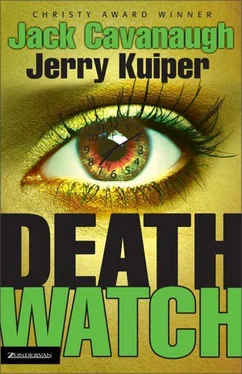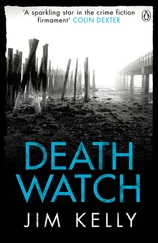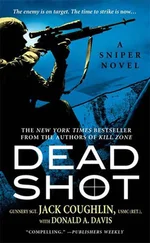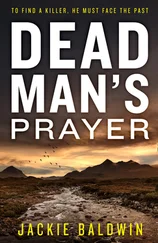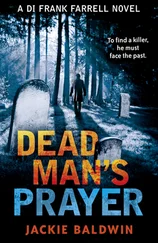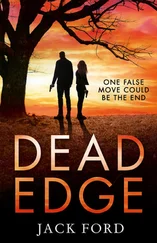Pockets of people stood around and, like him, watched what was going on. They paid little attention to each other, and no attention to Billy. They were all waiting for something to happen. Apparently this unexpected episode of reality TV on their own block was better than the West Wing rerun that was on tonight.
Just then, camera lights switched on and the house across the street lit up like it was some kind of Hollywood premiere. Billy half expected to see Tom Cruise or Nicole Kidman walk in front of the cameras and wave. But all he saw was an old woman carrying a coffee cup, standing cross-armed and looking angry at what was going on.
Then the lights went off.
Just a test, apparently.
Billy had to blink a couple of times to get his night vision back. He looked at his watch, a cheap digital that had a pink strap and Tinkerbell on the face.
10:03 p.m.
There was no descending ball to mark the last minute. No one gathered in Times Square. No one had any idea where Dick Clark was at the moment, nor did they care. All eyes were on Lyle Vandeveer, retired machinist and model railroad hobbyist.
10:04 p.m. and thirty seconds.
Vandeveer was smiling. “Never felt better,” he said.
The paramedics nodded. All indicators were good.
Hunz Vonner had pulled a chair from the kitchen. One of the paramedics had set a piece of equipment on the workbench stool he’d sat on earlier. Hunz was leaning forward, arms on his legs, staring intently at Lyle Vandeveer.
Sydney held Lyle’s hand.
10:04 p.m. and forty-five seconds.
“You’re going to give a lot of people hope tonight, Lyle,” Sydney said.
Lyle gave her a sheepish grin. “Seems silly, doesn’t it? I haven’t done nothing but sit in my chair.”
Ten seconds.
A paramedic started counting down. “Ten, nine, eight. ”
Sydney caught his eye and shook her head.
He stopped.
Everyone watched the clock on the wall, the one that hung over Lyle Vandeveer’s peaceful valley like a huge sun—everyone except for the paramedic who had his hand on Lyle’s wrist pulse. His eyes were on his watch.
Three seconds.
Two seconds.
One.
10:05 p.m.
For a moment, everyone held their breath.
Lyle grinned. “Made it,” he said.
Hunz Vonner clapped a single clap. “Excellent!” he said, jumping out of his seat. “I’ll notify the station.” He pulled out his cell phone and strode into the kitchen.
Sydney fought tears. All she could think of was the pain Lyle had endured all his life. The guy deserved a break and tonight he got one. She gave him a hug.
Lyle Vandeveer blushed.
“After a hug like that from such a pretty woman,” he said, “I could die a happy man.”
A machine alarm sounded.
A queer expression came over Lyle Vandeveer’s face. He jerked stiff. His back arched.
“I don’t believe this!” one of the paramedics cried.
Sydney took a step back. “What’s happening?”
Hunz ran in from the kitchen. He caught sight of Lyle Vandeveer—limp now, for a moment his eyes wide with surprise, then expressionless, staring emptily at the ceiling.
“No!” Hunz shouted.
With a sinking feeling, Sydney watched as the paramedics shocked, pounded, and injected Lyle Vandeveer with medicines to keep him alive. Their efforts were useless.
Lyle Vandeveer was dead.
“Ten-oh-five exactly,” said the paramedic.
“No,” Sydney cried. “We all watched. It was .
“Ten-oh-five exactly,” the paramedic repeated. He held up a fist and tapped his wristwatch. “Atomic. Linked to the Naval Observatory in Colorado. Mr. Vandeveer’s clock is thirty seconds fast.”
Hunz Vonner thrust his cell phone at Sydney. “Rosenthal,” he said.
“Sydney? This is Sol. We’re going to lead with your story tonight. Grant will introduce it, then we’ll cut live to your location. Look, Sydney, we’re going to have Vonner do the report.”
Before she had time to object, Sol continued, “I know this is your story, but Vonner is good exposure for the station. What better way to introduce him to our audience than to show him on the front lines fighting this thing? It’ll make a splash.”
“Sol, it’s 10:53! He hasn’t prepared. I did the background. I interviewed Mr. Vandeveer. Most of the time Hunz wasn’t even in the room. “She sounded whiny, even to herself, like a five-year-old begging to stay up past her bedtime.
“Sydney, we don’t have time to argue. Give Hunz your notes. He’s a professional. And give him any assistance he needs.”
The line went dead.
Sydney handed the phone back to Hunz Vonner. “You’re doing the live feed.”
“I know,” Hunz said.
She held out her notepad. “We have a couple of quotes from Lyle,” she said. “I thought we could lead with .
Hunz waved off the offer of her notes. “I won’t need those,” he said, walking away.
The media spotlight made the exterior of Lyle Vandeveer’s house glow, set off by solid black shadows. Something newsworthy had occurred here. In this case a mysterious death, which was always good for ratings.
Hunz stood with perfect posture, self-assured, listening to instructions in his earpiece, making a last-minute adjustment to his tie. A microphone with the station’s call letters was handed to him. As the station cued him, his eyes crystallized with concentration. He peered calmly into the camera.
“A few minutes ago, in this quiet suburban neighborhood, a man died, another victim of a mysterious and frightening plague of deaths that has been sweeping the globe. What makes these deaths so frightening is their sudden, random nature, and that each of them is preceded by a written notice of death. Who is behind these tragic deaths? That remains unknown. But the scope and alarming accuracy of these notices points to a terrorist organization of immense size and resources.”
Sydney stood beside a sound technician as Hunz related the growing number of death watch victims locally, nationally, and internationally. Out of the corner of her eye she could see Opal Whitcomb, Vandeveer’s neighbor, the one he’d said he’d call in the morning. She was standing on the edge of the television lights watching the broadcast, arms folded, coffee cup dangling from a finger. She wiped away tears.
Moments after Lyle Vandeveer’s death Sydney insulated herself from everything but the task at hand. It was something she’d taught herself to do whenever life’s load threatened to bury her. She imagined herself donning a coat made of Teflon. Nothing except the needs of the moment stuck to it. Emotions couldn’t penetrate it.
The first time she used the Teflon coat was out of necessity. She’d been dispatched to cover an automobile accident. Three dead. A mother and her two daughters, ages three and eighteen months. They’d been broadsided by a drunk driver running a red light. The drunk walked away with a bump on his head. The car with the family had blood everywhere. Ceiling. Steering wheel. Dashboard. CD player. Then, the unthinkable happened. The volunteer police chaplain arrived to console the family of the victims, only to discover it was his wife, his children, who had been killed in the car.
The only way Sydney could hold it together and report the family tragedy was to don her Teflon coat.
Tonight, the moment she felt the shock of Lyle Vandeveer’s death wearing off, she put it on again. She had to shut out all personal thoughts and feelings for Lyle Vandeveer and his family. If she didn’t, she wouldn’t be able to do her job.
Later, when she was alone, she’d cry for Lyle Vandeveer. She’d cry for Bea and Cindy, who were taken from him so suddenly. She’d think about Lyle’s peaceful, happy valley and cry, knowing that it was a far better world than the one in which he lived. She’d cry in frustration over having medical help within arm’s reach and still being unable to save him. She’d cry with anger over the sick, twisted mind that was behind this torturing of innocent people. And she’d cry tears of guilt for making promises to Lyle Vandeveer she was powerless to keep. She’d cry because he’d believed in her, trusted her.
Читать дальше
